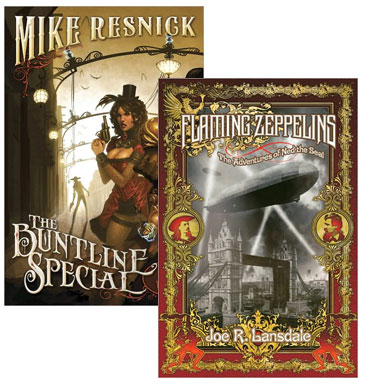Read This: Christmas Romances

I’ve been reading historical romances for a while now, but I’ve still got a lot of catching up to do, and thematic elements that are probably old hat to established fans can still catch me off guard sometimes. For example, both Cathy Maxwell’s His Christmas Pleasure and Jennifer Haymore’s A Season of Seduction both use the device of a property in a remote location, or at least remote to London—Northumberland in the one case, Cornwall in the other—which is discovered to be in much worse shape than anticipated, but which the romantic heroine (with or without the assistance of the hero) is able by dint of hard work to restore to functional domesticity. The two scenarios play out rather differently, but it was still a bit jarring to see the basic premise appear twice in quick succession; I’m assuming that it’s a convention I just haven’t come across before now—one that I was almost tempted to attribute to the Christmas-themed historical romance, but I’m guessing the application is a bit broader than that.
The two novels share another basic plot element in common: Both heroes are eager to rush into marriage with a well-off woman in order to gain access to her funds, but come to fall in love with her for herself. Again, though, Maxwell and Haymore take very different approaches to this convention, and for my own tastes I’m inclined to give the edge to His Christmas Pleasure—it gets the elopement between its two leads out of the way fairly early, then focuses on relationship building (which is where that dilapidated estate comes in) then puts the marriage to one last, massive challenge. Haymore also brings her characters together very quickly in the sexual sense, but the story is less concerned with building a relationship than with throwing increasingly difficult obstacles in the relationship’s path and focusing on the separate emotional transformations of the hero and heroine as they are made ready for marriage. One of the biggest obstacles Haymore’s couple faces is that the hero is being blackmailed by a mentally unhinged ex-friend, though, and I confess that of all the generic conventions I’ve discovered in my romance reading, the mentally unhinged antagonist is the least satisfying, especially since I’ve yet to find a book in which it’s handled convincingly, rather than played as an over-the-top melodramatic twist. Maxwell also has a highly melodramatic secondary character, but she’s not so much an antagonist as an annoyance—the ways she lashes out emotionally, and the ways in which other characters react to her outbursts, feel that much more authentic… as do the rest of her supporting cast.
(For what it’s worth, the “Christmas” elements in both these stories are primarily confined to their big finishes; Maxwell’s story takes place over three months, and Haymore’s over two. But Maxwell does at least get into some detailed discussion of holiday customs.)
24 December 2010 | read this |
Read This: Steampunk Westerns
 I have a new review in Shelf Awareness this morning, talking about two recently published Wild West steampunk novels—of the two, I have a preference for Joe R. Lansdale’s Flaming Zeppelins, which I love because it’s just plumb crazy. You’ve got Buffalo Bill Cody’s disembodied head being kept alive in a jar, guiding his Wild West Show to Japan on airships so they can rescue Frankenstein’s monster from the Shogun, after which they run into parodies of two classic Jules Verne and H.G. Wells characters? And that’s just the first of two novellas? Sign me up for some of that.
I have a new review in Shelf Awareness this morning, talking about two recently published Wild West steampunk novels—of the two, I have a preference for Joe R. Lansdale’s Flaming Zeppelins, which I love because it’s just plumb crazy. You’ve got Buffalo Bill Cody’s disembodied head being kept alive in a jar, guiding his Wild West Show to Japan on airships so they can rescue Frankenstein’s monster from the Shogun, after which they run into parodies of two classic Jules Verne and H.G. Wells characters? And that’s just the first of two novellas? Sign me up for some of that.
Mike Resnick’s The Buntline Special is entertaining, but it comes off as tame in comparison to Lansdale’s stories—in part, I suggest in the review, because Resnick is basically sticking to the established narrative of the Gunfight at the OK Corral, just adding some steampunk and fantasy glosses to the events. The characters hold up, but they’re being put through their paces—Lansdale allows for a lot more unpredictability, and it makes for more wildly enjoyable storytelling.
In a footnote, I mention that either book might make good follow-up reading for folks who liked Cherie Priest’s Boneshaker, set in an 1870s Seattle that’s been cordoned off after a zombie outbreak… in fact, reading these two books reminded me that I ought to make some time for Priest’s sequel, Dreadnought. Priest’s tales may not be as flamboyantly weird as Lansdale’s, but Boneshaker is surprising and strange enough to keep you from becoming complacent, so I’m eager to see how another story set in the same universe plays out.
21 December 2010 | read this |

 Our Endless and Proper Work is my new book with Belt Publishing about starting (and sticking to) a productive writing practice.
Our Endless and Proper Work is my new book with Belt Publishing about starting (and sticking to) a productive writing practice. 
